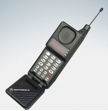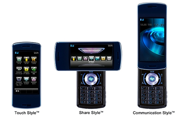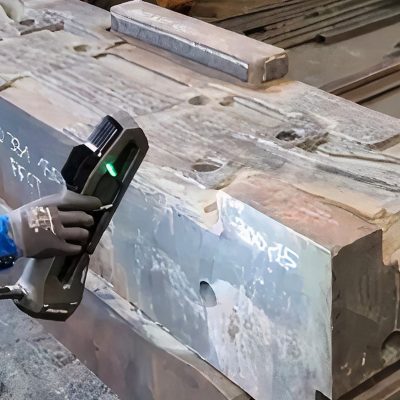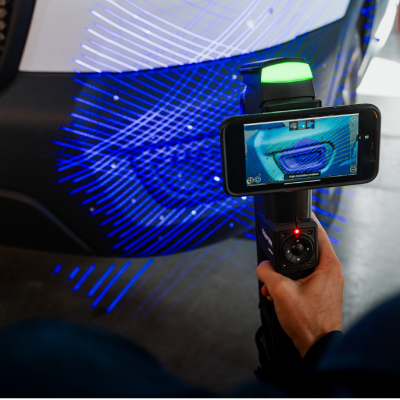April 15, 2024
Use of 3D scanner increases efficiency and reduces labor and material costs See the articleTogether, let’s take a look at the worldwide situation: in a new economy based on knowledge, the survival of a company will more than ever rely on the ability of their people to innovate. Steve Jobs, co-funder of Apple and a model of innovation, said one day: “Innovation distinguishes between a leader and a follower.”
Like in many other markets, things are moving really fast in 3D scanning and digital solutions. To perform in this field, you have to come up with a creation, not a reaction.
So all this leads to the big question: what is the future of 3D scanning? I obviously can’t pretend that I know the future but I can definitely give you my opinion and we can take some time to dream about what it could be.
First of all, we can think about all the factors that could be improved in the existing 3D scanning technologies. Speed of acquisition, accessibility of the technology and simplification of the technology will certainly be three big improvements in the future. That could open the world of 3D scanning to ordinary people and make a 3D scanner as easy to operate as a cellular phone. And talking of cell phones, why can’t we imagine in several years having a cellphone with a 3D scanner! We already have pretty good digital cameras in those high tech toys! And if you think that I have lost my mind, take a look at what cell phones looked like fifteen years ago compared to the latest high tech “Transformers” Phone (NEC N-01A):
The future 3D scanners could also give you more information about what you are scanning. We already have the geometry and the color of the object but we could probably add the specular information (finish) and material of the object for multimedia applications. Geometry and feature recognition simple shapes or more complex like human faces) would be amazing for automatic alignment in inspection or design applications. You could even get the GPS localisation for archeological site scanning or for something like 3D Geotracking (yes, I added the 3D, it’s probably professional deformation…).
For all those reasons, we can be pretty confident that, in the future, 3D scanning will be more into our lives with new amazing (and sometimes weird) applications. Here are some examples of what I’m talking about:
In the multimedia and entertainment field, they started by using 3D scanning to integrate life-like objects in movies and video games. Take a look at this video that shows how fast the visual effects have improved in the last century:
After that, they could decide to go a little bit further. For example, integrating the scan of your face in your favourite video game (like World of Warcraft) or a special object that you have at home in Second Life…
You can also imagine that, one day, you would be able to see the complete collection of the Louvres and other museums in front of your computer, with 3D digital galleries. Some museums have already started to provide 3D representation of artworks:
http://www.museevirtuel-virtualmuseum.ca/
https://www.rom.on.ca
Another nice application would be in the medical field. They already use the scanner to create custom made orthesis/prothesis but again they could go a little bit further. A person could decide to scan their complete body and keep the data as a back-up to be able to have plastic surgery after an accident. A client could also choose from a selection of his favourite movie star’s body parts or the doctor could use a scan of the 25 years old version of you that you scanned 20 years ago.
Ok, I agree that this plastic surgery application is a little bit creepy but like any other technology, there is an ethical issue when you go a little bit too far… But if you push the technology to its limit with creativity and innovation, you will always be amazed by the results. So always try to be creative and see you in 10 years with some new cool Handyscan 3D scanners!










22 Sep '09
Daniel Morrison
Dan, I'm tracking with you. Perhaps we don't end up with 3D laser scanners the size of a cellphone, instead it will be small enough to fit into the cellphone (check out http://www.microvision.com/ for a nice laser source). I like the medical ideas too. Scan your own teeth, email the dentist the model and then get the bad news via email. :) Heck, do the same with the doctor and let him see a 3D model of the skin problem. Personally, I think the visual effects world and I, are hungry for the specular information to be added.
23 Sep '09
Daniel Brown
If we look at the development in miniaturisation and the things that they now integrate to cellphones like those Microvision applications, I think it is reasonable to imagine 3D scanners inside a cellphone. We just have to be patient and we'll be able really soon to use 3D on new cool applications! The ultimate goal is a full democratization of 3D scanning and digital solutions!
25 Sep '09
Erik
I don't think miniaturisation of the hardware is the major issue really. My Blackberry phone could almost work right now. Take a bunch of photos from different angles with some calibrated targets in view and send them to an on-line website which runs the stitching software in the background. In a few minutes – hours you could have a 3D model available. I see the problem as the software and the computing power to run it and/or the bandwidth to transmit the data for processing. Google and a few others, including Microsoft, want us to use on-line applications to word processors, spreadsheet, draw and database applications, why not 'real' 3D scan processing (I'm excluding MS attempt with photos which was REALLY horrible)? Using a laser pen that projects a line and a good cellphone camera (>3mp - 5 & 8 are available) something like David (www.david-laserscanner.com) could produce crude but effective results. I got interested in 3D scanning when I did some work for our local Handyscan agents in NZ as a student. There is no way I can afford a scanner like they had, and no way to justify it where I work now (rats!!), but I would be able to afford a few hundred dollars for some hardware (a good phone and a laser pen) and then get a small application for the phone (Java?) which talks to a web based service. I would have to pay to get the finished 3D model (as well as the data charges to my cellular carrier), though the 'preview' should be free. Rather than damaging the scanner market I think it would grow it as it would encourage more people who want to experiment to get a taste of what scanning can do. As for the miniaturisation debate, sorry guys, I think you need to look further than cellphones sized or even built into cellphones, but scanning and obtaining more physical / environmental data like materials, temperatures and chemical ‘sniffers’ that will tell the user what chemicals are where and in what quantities (pockets of CO2, methane in mines or hydrocarbon fumes in bilges and below decks of marine craft etc). Colour is adding to the depth or width of what is gathered and I think adding other data sets is the direction things will head. As for scanning my teeth and getting the bad news by email – is the bad news the bill?
28 Sep '09
Daniel Brown
I think you have a really good point there. The problem will probably occur more on the software side. And, that is true that you can create 3D models from pictures and by the way, you don't necessarily need calibrated targets. Go check the ARC3D webservice (www.arc3d.be), the results are not the best quality but it is so simple and pretty cool. I have made a 3D model of my house with this thing just by taking a few pictures!!! But, my opinion is that the quality of the results and the versatility of those techniques are not comparable to the Handyscan 3D scanners. The David laser scanner can give you a quick approximation of the object but nothing compared to the detailled 3D scans with mapped texture that we can have with the VIUscan. What I'm saying is everything depends of your needs and applications. I think you are on the right track when you say that the treatment of the data will have to go through a web based application. We only need to improve the data you can get out of a cellphone. My main objective is to see someday a democratization of 3D scanning, whatever it takes. Is it going to be through cellphone? Maybe, or maybe not... The important thing for me is that everyone can take advantage of that great technology.
17 Nov '23
joyo of rocket league
Wow, that's what I was exploring for, what a stuff! existing here at this web site, thanks admin of this web page.